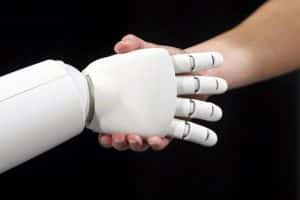Over the last few decades, but especially in recent years, technology has disrupted most industries and really changed the world in all sorts of ways. It continues to do so, too, with new developments and trends happening all the time.
If you’re an engineer, or someone who’s thinking about pursuing this kind of career path, it’s important to note how engineering and technology are meshing and some of the impacts occurring as a result. Read on for some of the key areas in which engineers are working with tech to help mold the world.
Robotics
 The field of robotics is growing at a rapid rate right now, and engineers are right in the thick of this kind of work. For example, one exciting project in development is a robotics systems known as “visual foresights.” This refers to the fact that while typically robots are designed to react to information in real time, responding as things happen, researchers are now working on ways to make robots able to imagine the future.
The field of robotics is growing at a rapid rate right now, and engineers are right in the thick of this kind of work. For example, one exciting project in development is a robotics systems known as “visual foresights.” This refers to the fact that while typically robots are designed to react to information in real time, responding as things happen, researchers are now working on ways to make robots able to imagine the future.
A team at the University of California is attempting to make visual foresight a reality, so robots will be able to interact effectively with items or situations they’ve never seen before. For instance, the robots may be able to determine what in-built cameras will likely see if they perform a certain set of movements in a particular sequence.
Right now, robots can only make limited predictions through this visual foresight, but this development means they’re starting to be able to learn to complete tasks without having prior knowledge, or needing assistance from humans. The work being done by engineers in this field is opening up a whole new world for how and where robots are used.
3D Printing

3D printing is another topical area right now. As an example, doctors are increasingly taking advantage of 3D-printed anatomical models to help them improve the outcomes of surgeries they perform. While previously, anatomical models were made out of hard plastic, today newer 3D-printed versions are more effective in helping surgeons practice operations in advance.
This is because surgeons get to use specially created replicas of patient organs which feel more like real living tissue than older plastic models. 3D options are easier for surgeons to cut into and also help them understand how much pressure to apply during operations, thus reducing the risk of fragile tissue being damaged.
A research team led by the University of Minnesota has been busy coming up with 3D-printed organ models with the same mechanical properties, and feel, as living tissue. These models incorporate soft sensors, too. The sensors give surgeons feedback during practice. Another plus with 3D-printed models is they allow surgeons to plan their work and predict how real patient organs will react to operations and heal.
Another key 3D printing project is the development of printed objects that connect to wireless internet without the need for electronics. For example, teams at the University of Washington are honing plastic 3D-printed wares that can connect and talk to other devices in a building and collate data from incoming sources. This is done using the internet but without the typical requirement of electrical components.
The university’s researchers have been able to 3D print pieces such as springs, switches, buttons, knobs and gears and then use these to replace some of the electronic functions usually performed by components with mechanical motion. The plan for this project is that one day, people will be able to create their own items from readily-available plastics at home, using domestic printers.
Biomedicine
If you’re considering completing an online master’s in engineering, you may want to think about specializing in the area of biomedicine. This booming field provides lots of opportunities for engineers. Apart from the development of 3D-printed organs, when it comes to biomedicine there are many other projects that could lead to breakthroughs.
For example, a potential game-changer is what’s referred to as the “golden nanopill.” At the University of Texas, a team of researchers is focused on complex plasmonic nanovesicles — that is, minute capsules which can be ingested as a pill. Working with other researchers at the University of Reims, the group is designing an innovative drug-delivery system that could transform medicine.
Once this golden nanopill has been swallowed, it will navigate the bloodstream and end up in a particular destination inside the body, where it can deliver its medicine in the exact spot for optimum treatment. Researchers believe that by hitting these nanopills with short laser light pulses when they’re in the correct position, the nanoparticles will change shape and release their contents on demand.
This delivery system could be especially helpful for cancer patients or for neurosurgeons who study and work with the brain. Doctors wanting to target only a select area of an organ to deliver medicine could help patients stay healthier while being treated.










0 కామెంట్లు:
కామెంట్ను పోస్ట్ చేయండి